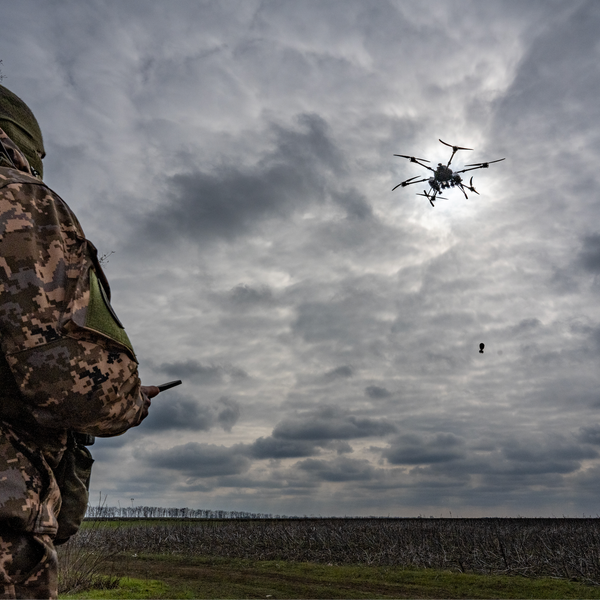BOOK REVIEW: Putin’s People: How the KGB Took Back Russia and Then Took on the West
by Catherine Belton
Reviewed by Jacob Stebbing
Jacob Stebbing is a graduating senior at Brigham Young University majoring in Russian with a minor in Middle East studies. From 2018 to 2019, he was the Co-Director of Praemon, an open source student analyst program.
(Also read former Senior CIA Officer and Cipher Brief Expert John Sipher’s review of Putin’s People here.)
Through meticulous research and a vast network of contacts, Catherine Belton reveals in Putin’s People, how a group of komitetchiki (KGB officers) co-opted capitalism to seize control of Russia’s financial assets before expanding their control to steer the reins of power from inside the Kremlin’s walls. This appropriation of ideals to which they were previously invariably opposed betrays a cynical outlook of a world in which morals mean nothing and power is everything.
Belton begins her story in the dying days of the Soviet Empire. Her first order of business is to dispel with the mistaken notion that Putin spent his KGB days in East Germany as a nobody in a dead-end post. On the contrary, she asserts that his time in Dresden was spent as a KGB liaison to the Stasi. Those close to him indicated to Belton that Putin played a role in the Soviet illegals program, supported terrorist networks abroad, and helped run technology smuggling operations. Meanwhile, forces in the KGB foresaw the USSR’s demise and siphoned money away in order to finance future subversive operations against the West.
The author then details the early days of the Russian Federation when Putin worked with Anatoly Sobchak. According to Belton, Putin ran the affairs of St. Petersburg while Sobchak enjoyed the privileges of his position as mayor. This position allowed Putin to use the oil-for-food program to put funds away for himself and his KGB networks. This section also explores the battle between the komitetchiki and the oligarchs for control of Russia’s resources and government. Ultimately, Putin and his KGB coterie won out, much to the future detriment of democratic values in Russia and abroad.
Once in power, those close to Putin projected the image of him as a young, energetic leader in contrast to the old and weary Yeltsin. And yet, for all his bravado Putin still faced moments where he seemed out of his element. Among these are the Kursk submarine disaster in 2000 and the Dubrovka Theater hostage incident in 2002. Although questions about whether the Kremlin orchestrated the Dubrovka situation still abound, things certainly failed to go according to plan and the incident tried the young new leader. As time passed, however, Putin’s confidence grew both in himself and the ultimate power he and his group wielded.
One of the Kremlin’s first targets in Russia were Vladimir Gusinsky and Boris Berezovsky, two media tycoons who heavily criticized Putin, including his handling of the aforementioned crises. By taking over their assets, the Kremlin gained control of the media and stifled freedom of speech across the country.
The Kremlin then turned its eyes on the private owners of Russia’s natural resources. Belton asserts that Putin’s takeover of the oil and gas company Yukos and the arrest of its CEO Mikhail Khodorkovsky marked the major watershed moment in 21st-century Russia. This event indicated to Russian businessmen that no one was safe no matter their wealth or prestige; they must either bend to the Kremlin’s will or face its wrath. Further, the hunger of Western corporations to buy into Russia’s vast store of natural resources after the government takeover of Yukos demonstrated to Russia that the West’s commitment to democracy and human rights could be purchased by the highest bidder. As the author notes: “Putin found a crucial weakness in the West’s armour: ultimately, financial interests would outweigh concerns about his regime’s abuse of the law and democracy.” Finally, the takeover of Yukos allowed the Kremlin to amass more funds to subvert the West while at the same time integrating Russia further into the international system and expanding the Kremlin’s reach abroad.
Lastly, Belton explores the vast networks of black cash that fund Russian operations among the private and public sectors in Europe and America. The author looks at how the Kremlin finances both left- and right-wing political groups to sow discord in the West. Although she does not incontrovertibly confirm collusion between Donald Trump and Putin to ensure the former’s election as U.S. president, she does examine his ties to Russian organized crime that reach back to the final days of the Cold War.
While some details concerning Putin’s past and the full range of the Kremlin’s corruption of the West remain unclear, Belton masterfully draws upon many sources to paint the clearest picture to date. Where facts cannot be totally verified, the author notes the limits of her information while drawing compelling inferences based on the available evidence.
With the recent adoption of amendments to Russia’s constitution, Putin and his coterie tightened their grip on Russia and ensured Putin’s standing as president until 2036. This event makes Belton’s work incredibly timely and vital. Incisively written and wholly engaging to the last page, Putin’s People should be considered mandatory reading for all — Russia expert and novice alike — in order to understand modern Russia and the scope of the Kremlin’s malign operations in the West.
Disclaimer: The Cipher Brief, like other Amazon Affiliate partners, gets paid a small commission based on purchases made via the links provided in this review
Read more Under/Cover book reviews in The Cipher Brief
Read Under/Cover interviews with authors and publishers in The Cipher Brief
Interested in submitting a book review? Check out our guidelines here
Sign up for our free Undercover newsletter to make sure you stay on top of all of the new releases and expert reviews
Read more expert national security perspectives and analysis in The Cipher Brief











